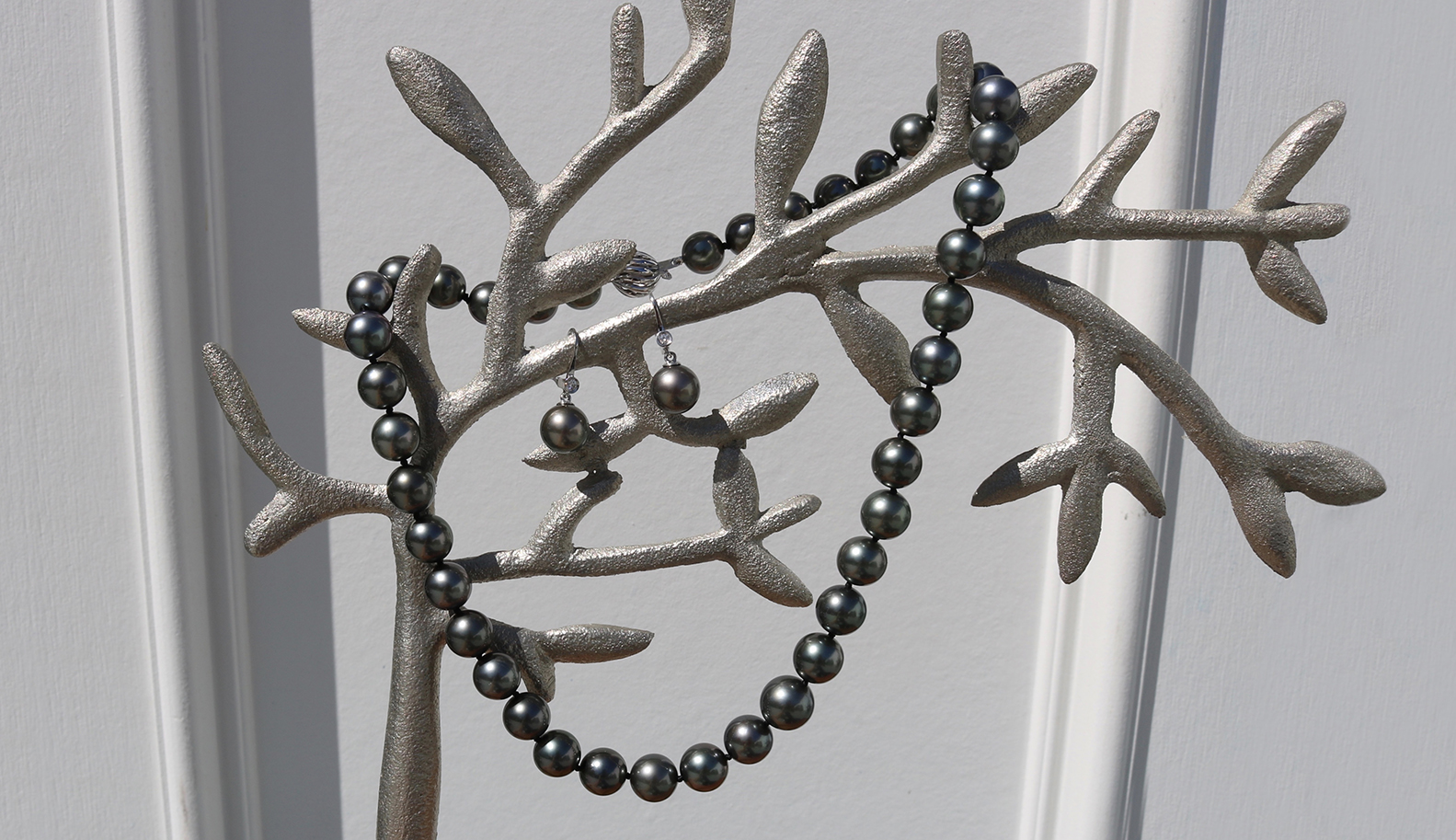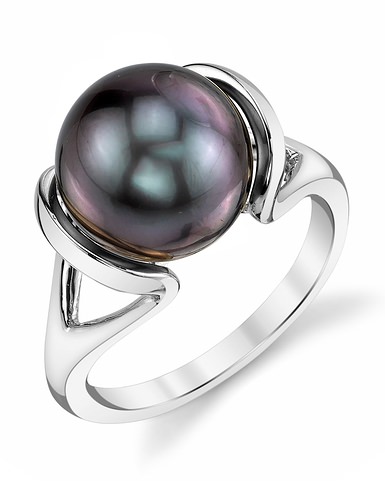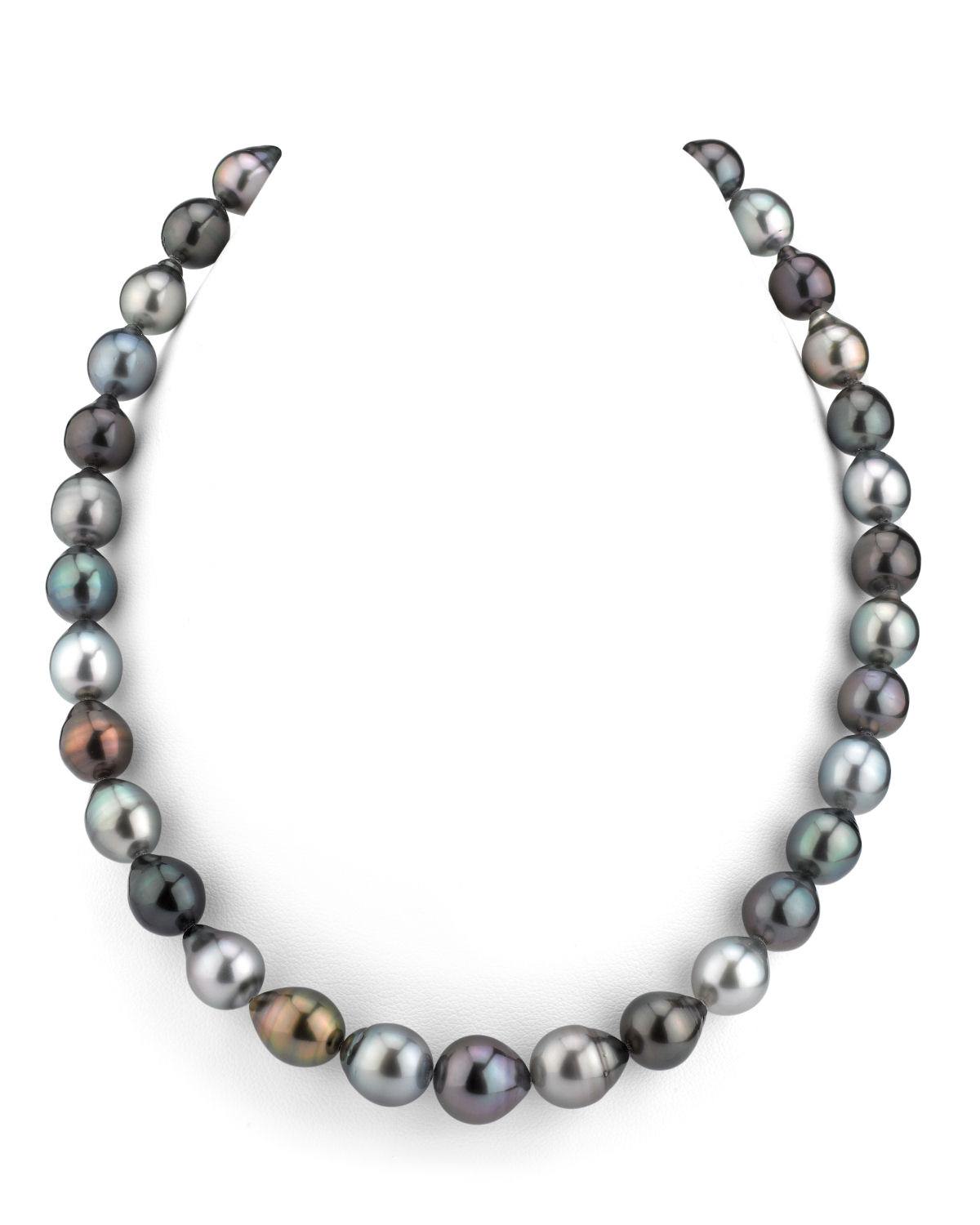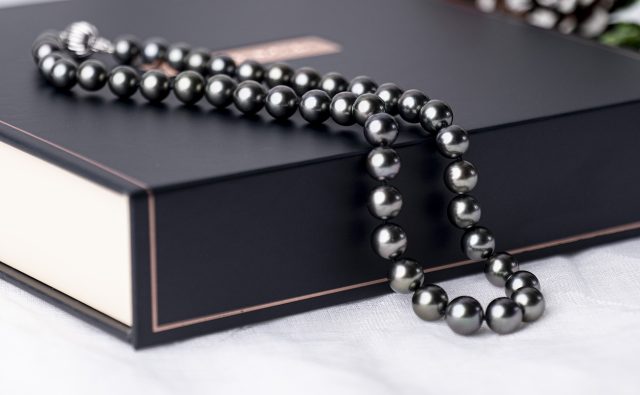The Magnificent Tahitian Pearl Colors


Tahitian pearls, sometimes known as the “queen of pearls,” are among the most cherished gems in the jewelry market. Harvested mainly in French Polynesia, their exotic appeal and extensive color range make them unique and highly sought after. GIA – Pearl Description

What sets Tahitian pearls apart is their captivating color spectrum. Unlike other pearls that are mostly white or cream, Tahitian pearls offer a fascinating palette of colors, Tahitian pearls have the capability to be full of an assortment of undertones, and overtones of:
All these varieties of colors give the Tahitian pearls high value due to their versatility. Tahitian pearl colors are diverse. So, they can be used to create amazing, unique and colorful pearl jewelry.
Watch our video on Tahitian pearl colors for more information:
The vibrant colors of Tahitian pearls are a result of the thickness and unique quality of the nacre layers. The thicker the nacre, the more intense the color, leading to a remarkable depth and glow. Pearl Paradise – Tahitian Pearls
Tahitian pearls are often referred to as “black pearls.” However, they can range from true black to a charcoal gray, reflecting undertones of green, blue, or even silver. The origin of these colors lies in the black-lip oyster (Pinctada margaritifera), which produces pearls with a unique sheen. Pearl Guide – Tahitian Pearls
Some Tahitian pearl colors, like peacock and cobalt blue, are considered particularly valuable. Other cherished shades include golden pearls, which are rare, and the mysterious rainbow colors, which show a mix of different hues in the same pearl.

The diversity of Tahitian pearl colors is a reflection of nature’s creativity, making each pearl a unique piece of art.
Selecting the right color in Tahitian pearls is essential. The color of the Tahitian pearl earrings or necklaces should complement the wearer’s skin tone and attire, offering a balance that enhances the overall appearance.
Choosing the right color is an essential aspect of Tahitian pearl selection, highlighting the personal tastes and characteristics of the wearer.

The color of a pearl may vary under different lighting conditions. It’s recommended to observe Tahitian pearls under various lights and even try them on to assess color compatibility with the wearer.
Uniform color is an indicator of quality in Tahitian pearls. A pearl color chart can be helpful, and professionals often judge pearls against a non-reflective white background to ensure color consistency.
Distinguishing between a naturally colored Tahitian pearl and a dyed one requires a keen eye and sometimes expert assistance. Natural cultured Tahitian pearls exude a deep, radiant luster, a quality that’s challenging to achieve with dyes.
On a closer inspection, dyed pearls often betray signs of their alteration: you might notice uneven color distribution or concentrated color spots, especially around the drill hole where the dye might have seeped in more deeply.
Additionally, the surface of dyed pearls can sometimes appear more matte, lacking the characteristic glow of natural pearls.
For those who want definitive assurance, submitting the pearl for an X-ray examination at a reputed gemological lab can offer concrete evidence of any treatment source.
Tahitian pearls are renowned for their natural and diverse color palette, which sets them apart in the world of gems. They genuinely boast a wide array of colors, each influenced by various factors within the oyster’s environment and its genetics. While some pearls available in the market might undergo treatments to enhance or modify their hue, genuine Tahitian pearls offer an organic richness in color that is hard to replicate.
Natural Tahitian pearls have a deep, radiant luster that is hard to replicate through dyes. If you look closely, dyed pearls might show color concentrations around the drill hole. Additionally, an X-ray examination, often available at gemological labs, can provide conclusive evidence.
Tahitian pearls, with their vast spectrum of colors, cater to a wide range of aesthetic preferences. While certain colors like peacock, with its shimmering mix of green and blue, and the deep cobalt blue are particularly prized and may fetch higher prices in the market, the idea of a ‘best’ color is profoundly subjective. When selecting a color, it’s essential to consider personal preferences, the intended use of the pearl (e.g., jewelry type), and how it complements the wearer’s skin tone and wardrobe. After all, the best pearl is one that resonates most with its owner source.

Add a note of iridescence to an evening look with a charming Tahitian pearl necklace. Whether you’re looking for round or baroque pearls, these deep, dark gems are stunning against all skin tones and paired with all types of outfits. Browse our collection and find your dream piece!
Signup now and receive an email once I publish new content.